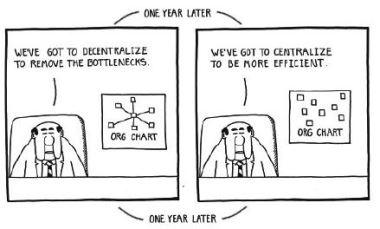To those of us that are passionate about understanding how to deal with an ever increasingly complex world, I can’t recommend enough to read General McChrystal‘s book ‘Team of Teams‘.
 “Management models based on planning and predicting instead of resilient adaptation to changing circumstances are no longer suited to today’s challenges. Organizations must be networked, not siloed, in order to succeed. Their goal must shift from efficiency to sustained organizational adaptability. This requires dramatic shifts in mental and organizational models, as well as sustained efforts on the part of leadership to create the environment for such a change.”
“Management models based on planning and predicting instead of resilient adaptation to changing circumstances are no longer suited to today’s challenges. Organizations must be networked, not siloed, in order to succeed. Their goal must shift from efficiency to sustained organizational adaptability. This requires dramatic shifts in mental and organizational models, as well as sustained efforts on the part of leadership to create the environment for such a change.”
This is exactly the organizational approach I support for large, complex projects in my consulting role: organize projects as open space, removing people from their department of origin and creating a team cohesiveness around the common goals of the project.
It is surprising how this is still a new way of organizing work for many organizations that are still very much in the departmental, top-down industrial organization model. And, as reinforced in the book, “Efficiency is necessary but no longer sufficient to be a successful organization. It worked in the twentieth century, but it is now quickly overwhelmed by the speed and exaggerated impact of small players, such as terrorists, start-ups, and viral trends.”











